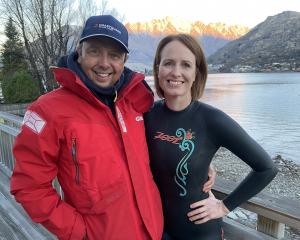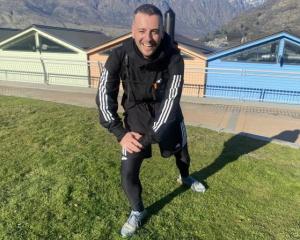The celebratory clink of whisky glasses this week was a sign of good things to come for Wanaka woman Desiree Reid as she toasted the news her proposed Cardrona Valley whisky distillery, perfumery and museum development had been approved.
While it will be a decade before the first batch of Cardrona-made single malt will be poured, its production is expected to be under way by early next year.
The distillery's main product will be whisky, but it will also produce vodka, fruit liqueurs and rose oil, and host daily tastings and tours.
The commissioners' decision to grant resource consent was ''very exciting ... absolutely wonderful'', Ms Reid (35) said yesterday, before sharing a round of Scotland's national drink with the project's architects, Sarah Scott and Jennie Nelson, who had accessorised with tartan for the occasion.
''I'm just so rapt ... that I can be part of the Cardrona Valley future. It's just such a wonderful place. The people up there have been really really fantastic.''
In fact, Ms Reid had been ''blown away'' by the support of Cardrona residents, who backed her proposal from the outset, and as an enduring show of gratitude her company Zescent Group Ltd will provide a museum building at the distillery complex to house and display the historic artefacts and stories of the valley, along with staff to run the attraction.
The Cardrona Heritage Trust will control the museum exhibits on behalf of the community.
Ms Reid spent a long time researching business ideas before settling on whisky, an interest she developed in her early 20s when managing a gastro-pub in London and being introduced to single-malts by the locals.
She soon became hooked, particularly on blends such as Glenfarclas and Cragganmore, and it is those ''rich but clean tasting'' Speyside styles she hopes to emulate.
Her whisky-making research has involved trips to Scotland, hands-on distilling courses and international alcohol trade shows and seminars.
In May, she travelled to the Scottish Highlands for a third time, this time with her parents - who are investing in the business - and Ms Scott.
They visited 10 of the great Scottish distilleries and saw the Cardrona-bound traditional pot stills being made at fourth-generation coppersmiths Forsyths.
Ms Scott, who owns the architecture firm which worked on the project, said the trip had a ''huge impact'' on the Cardrona proposal.
''The layout of the plant, the way in which it functions, the whole process ... it's vital in terms of understanding what the building needs to do,'' Ms Scott said.
After selling her South Canterbury dairy farm last year Ms Reid, a Nuffield Scholar, moved to Wanaka where she had holidayed throughout her childhood.
''Both Cardrona and Wanaka have a soft spot in my heart,'' Ms Reid told last month's resource consent hearing.
From a whisky-making perspective, the weather extremes of the Cardrona Valley were ideal for making and maturing single malt, she said.
''The variable climate means the casks have a proper cycle. During the summer months the spirit expands out into the wood then during the winter it contracts back into the barrels.''
Ex-bourbon casks from a small distillery in the United States will be used in the manufacturing process, but the hunt is still on for ex-sherry casks.
''Both make a beautiful whisky but create quite different flavour profiles ... Because people aren't drinking as much sherry these days [ex-sherry casks are] harder to find,'' Ms Reid said.
Building is expected to start in September at the 3.5ha development site opposite the entrance to the Cardrona Alpine Resort and Forsyths representatives are due to arrive in New Zealand in February or March to commission the distillery.
Initially, barley will be sourced from Canterbury, but Ms Reid hopes to establish a small malting plant in the valley in the future - ''then we can get local grains, which would be just amazing''.
While it was a ''real shame'' the whisky would not be ready until the mid-2020s, the wait would be worth it, Ms Reid said.
''We want to do a proper traditional job of it and really, that's how long it takes.''












